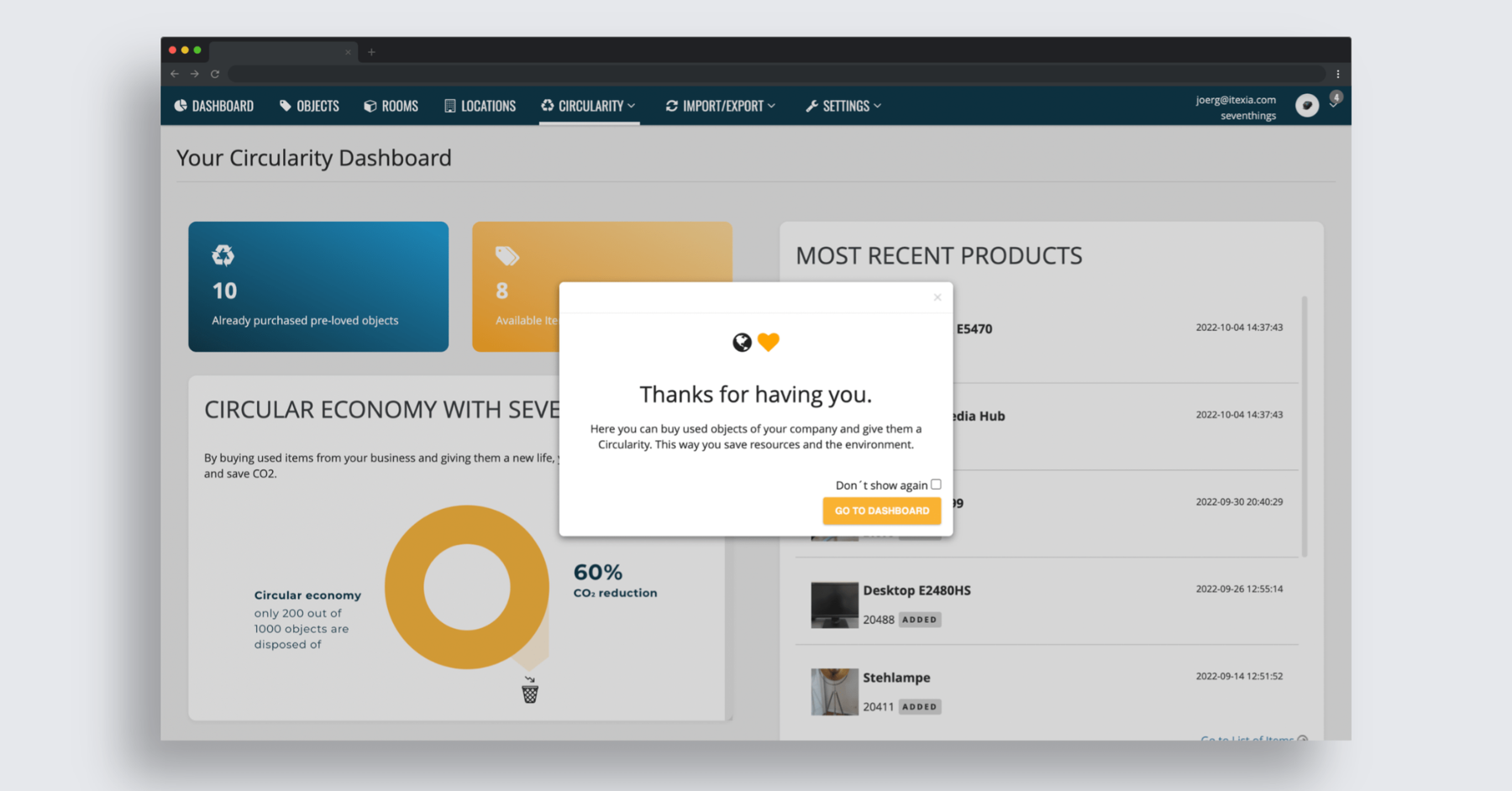The need for sustainable economic development is omnipresent today. The climate crisis is already being felt, and there is growing political and social pressure on companies to commit to sustainability.
The principles of circularity and the circular economy are promising strategies that companies can pursue to operate in a more sustainable and ESG-compliant manner. They minimise the use of materials and resources and avoid waste by returning items to the cycle. A key to the successful implementation of these principles is the transparency of processes within and between companies.
This blog post shows...
... why transparency is so important for the circular economy, and
... how digital inventory management can help increase them.
Transparency and the Circular Economy
The circular economy is based on a system in which products are used as efficiently and for as long as possible, passed on after use and eventually broken down into parts and materials to be returned to the cycle. For this to work, companies need to know exactly what products they have and what materials they use. It is also important to have information about the origin of materials and how they can be integrated into the production process. In addition, the flow of materials must be closely tracked and controlled to ensure that materials can be recycled or reused at the end of their life cycle.

To make this process successful, transparency is crucial. Companies need to ensure that everyone involved in the supply chain knows what materials and resources are being used and where they are located. This is the only way to ensure that the right materials are available in sufficient quantities and are used efficiently.
Increase transparency with digital asset management
Digital asset management can make an important contribution to increasing the transparency of internal and external business processes on several levels. This lays the foundation for a circular economy.
- Digital inventory management enables better management of products in the company and helps avoid redundancies in procurement, such as duplicate purchases. According to a 2019 study by IT research and advisory firm Gartner, companies on average do not use 25 per cent of their hardware, which can lead to unnecessary costs and wasted space. Transparency around an organisation's assets can therefore lead to efficiencies, particularly in procurement. This is in line with the first principle of the circular economy: reduce.
- In addition, digital asset management can help organisations know what assets they have, where they are and who is responsible for them. Assigning responsibility has been shown to increase the value of assets, leading to better maintenance and a longer useful life.
- When digital asset management is extended to include circular asset management, many other exciting approaches to the circular economy open up. For example, inventory that is no longer needed by a department can be transparently shared within the company or brought back into the cycle by being sold to employees or other companies. Old and defective stock can also be passed on to refurbishers and remarketers.
The Circularity Hub from seventhings makes it easy to get started with circular economy and circular inventory management. The intuitive inventory manager from seventhings is extended by a clever solution that allows you to put unwanted inventory back into circulation with just 2 clicks. Read more about the Circularity Hub in our blog post.
Conclusion
Transparency is key to the successful implementation of the circular economy. Companies need to ensure that they can accurately track and control their inventory from procurement to disposal. Digital asset management can help increase transparency and optimise material and resource consumption. In this way, companies can help protect the environment while increasing efficiency and profits.


